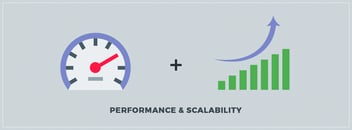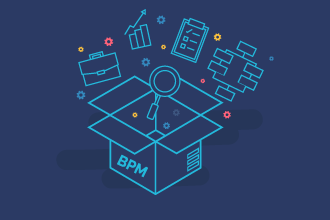Traditional BPM systems are ugly, pricey, slow, and extremely rigid. We have already settled the discussion about why cloud-based bpm software are leagues ahead of legacy BPM systems.
Does that mean that you can pick any cloud business process management software? Will all of them solve your problems?
The Cloud Wars
So what makes one cloud BPM better than the rest? There are certain backend considerations like where they run their server farms, the success rate of their previous deployments, and uptime assurance that you can take into account when evaluating a cloud vendor. But there are a lot of other factors that you need to understand before banking on a cloud vendor.
Let’s take a look at a few pointers that can help you choose the right cloud-based BPM for your business.
1. The Cost
Whether it’s an ice-cream or a high-rise apartment, price is a determining factor for buyers. BPM in the cloud comes with all types of functionalities and each product offers its own value proposition. Some come with a fixed price tag, while some BPM cloud vendors give you a quote based on what your requirements are.
The best solution is to choose a cloud BPM tool that works on the software as a service (SaaS) model. SaaS may sound synonymous to all software built on the cloud, but that’s not necessarily the case. SaaS plus BPM in the cloud is a solid combination for a software that readies your business for the future investments when you’re ready to scale up.
If you already have a BPM system (either legacy or cloud), it’s important the overhead of buying the new BPM in the cloud isn’t higher than the cost of switching from your existing tool.
2. The User Experience
When consumers think of a cloud BPM platform, they automatically think that it will be a breeze to use. More than likely, the tool will be better in terms of the ease of deployment, ease of pricing, ease of storing, ease of mapping processes, etc. But that doesn’t always mean user-friendly in terms of UI and UX, or that it will be easy for everyone to use the tool.
A cloud business process management can be great in its offerings, but it might require its users to have some extent of programming knowledge. Enterprise software is migrating to the cloud space, but a lot of BPM software still comes with a host of coding requirements, because that’s how BPM software have traditionally been built.
However, they may not market themselves as a code-heavy application because it’s mostly implied.
Before you buy a cloud BPM, ask for complete information about the BPM and its application functionality. Do your research on how much coding a cloud BPM requires. If you don’t have time and resource to program the app, take the road to low code BPM software.
3. The Lock-In Risks
Vendor lock-in is an old trick. You might think that cloud BPM that are based on SaaS might be different, but that’s not always the case. What is true is that there will be some degree of lock-in with every cloud vendor, sometimes due to a platform’s complex and proprietary architecture. Other times, it’s intended to be something for the long run and lifetime of the software.
It’s a tricky place to be in – you evaluate the price of a BPM product, the features it has, the ease of use, and everything else you can think of. And yet, you might fall for this trap that could enslave your business from moving to other vendors even if you want to. A lock-in situation is good only if your business is married to the right platform.
The only way to safeguard yourself from this is to be upfront with your BPM vendor and ask them how easy it is for you to switch to other products. The lack of data/service portability in SaaS-based cloud BPM can be a real threat, and it limits you from exercising your freedom of choice when you have better platforms to move to.
To avoid this, make sure you read the contract or terms of service thoroughly. If a lock-in period is imperative, don’t go beyond a one year commitment. This helps you plan your exit route even before the contract ends, or extend your services with the vendor if you like them.
4. The Support
If you find that the cloud BPM software options you’re considering are the when it comes to pricing, features, ease of use, etc,. You should also take a close look at after-sales support. Every cloud BPM vendor will claim to have great support, but how many actually deliver? Most businesses only realize the true value of a good vendor support when it’s not there.
So how do you test a BPM on cloud vendor for support? Here are some starters.
- Do they offer a try-before-you-buy experience?
- Do they allow contractual flexibility or long-term price protection?
- What does their SLA say about downtimes, disaster recovery, data storage, performance, etc.?
- How open are they about communicating their operational transparency?
- Are they compliant to industry regulations and standards?
- Do they offer multi-tenancy? How good is their architecture?
- Can you configure some of their offerings to meet your specific needs?
These are a few pointers to start with; your IT team can help you come up with more pertinent questions. But the proof is in how you use it; you’ll come to know the quality of vendor support only when you get into a contract. That’s why it’s important to know the risks of vendor lock-in.
Buyers, Beware!
Not all cloud-based BPM platform are equal. Use your due diligence to choose one that fits your process requirements, your organization’s budget, and your team’s skillsets. If you’re ready to test the waters, take a tour of a few cloud-based BPM products and see if they’re what you need. Go ahead and start here with a free trial of Kissflow Process.
Explore essential factors to consider when selecting a cloud-based BPM solution, including cost, user experience, vendor lock-in risks, and support quality.



